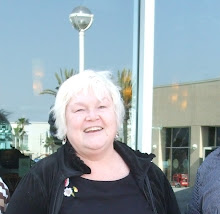Monday, May 17, 2010
Saturday, May 8, 2010

I realized as I put together the “static-dynamic continuum” that I don’t think it is a continuum that I intend to move along at all. I found it is difficult to think of any collaboration that is not dynamic. The very nature of collaboration—as distinct from cooperation where each participant creates a separate part of a whole—means that people have to be in a dynamic situation. Thinking will change as different perspectives are realized and explored. If we are all thinking alike, someone is not thinking.
I also found that content generation that is dynamic may also suffer from being like jello—it looks firm until you poke at it, it disintegrates in heat (translate to criticism), and it is often unsatisfying if you are really hungry. I do not want to “begin to move toward the dynamic end” of content generation completely. I want to be able to see the published version of ideas even when, or especially when, they are wrong or I disagree with them.
Communication is sometimes best when it is not dynamic. Sometimes a school simply needs to get information out to parents; a newsletter or electronic phone call, both static forms of communication, may be the best option. If there is a nut with a gun outside the school, I do not want to discuss it with parents; I want them to stay away and know that their children will not be released to them until it is safe to do so.
I am glad there are ways that classes can operate on the dynamic end of the continuum WHEN IT IS APPROPRIATE. But I do not want revisionist history or weird science to become the norm; I do not want stale, pale male literature to be omitted from curricula. I think we need all the tools and toys to motivate, inspire, and acculturate students in our arsenal to battle ignorance, illiteracy, and lack of motivation.
Saturday, May 1, 2010
Subscribe to:
Comments (Atom)
